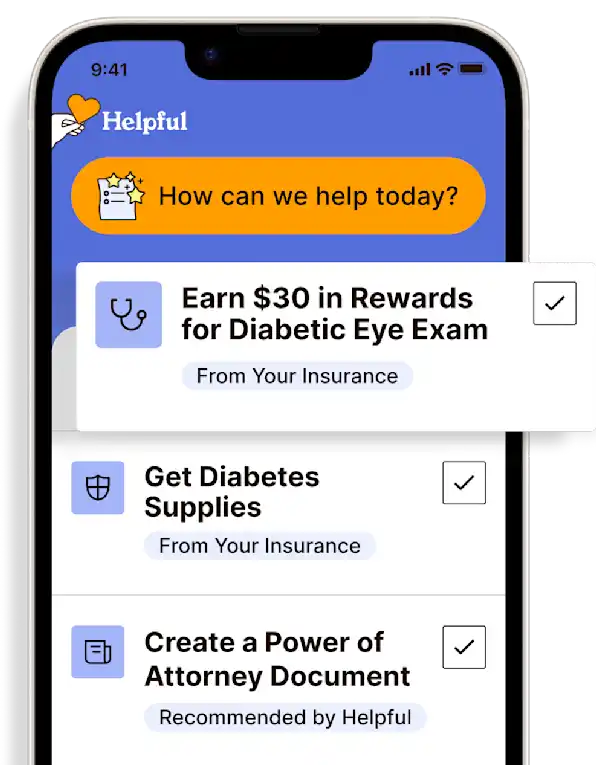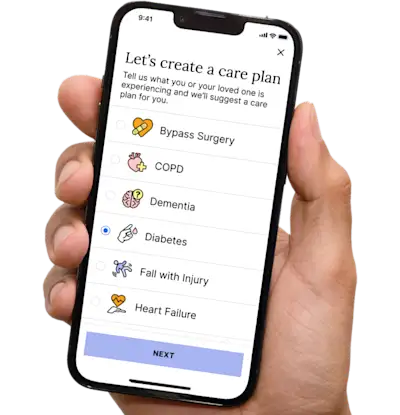Eyes, Feet, Retinas and Toes, Retinas and Toes
"Head, shoulders, knees and toes, knees and toes." For individuals with diabetes, the toes part is certainly right, and let's add the eyes.
Get insurance benefits, legal documents, and medical records in one place

Helpful Highlights
When diabetes is present, the organs and areas of the body with microvasculature (tiny blood vessels) are especially vulnerable to damage. These include the eyes, kidneys, toes and feet.
Diabetic retinopathy often does not have symptoms until late in the disease progression and can result in irreversible blindness.
People with diabetes frequently lose sensation in their feet and to hot and cold temperatures; therefore, knicks, cuts, scrapes, punctures, or other wounds can go undetected, leading to infection and limb-threatening conditions.
It is essentials for individuals with diabetes to have an annual eye exam that includes evaluation for diabetic retinopathy, as well as frequent self and professional foot exams.
Diabetic retinopathy
Diabetes increases the likelihood of developing other eye conditions such as cataracts and open-angle glaucoma; however, diabetic retinopathy is a serious complication of diabetes and the most common cause of vision loss for people with diabetes.
It occurs when high blood sugar levels affect the blood vessels in the retina - the light-sensitive layer of tissue at the back of the eye - causing them to swell (aneurysm) and leak (hemorrhage), or shut off blood flow completely. Damaged blood vessels and an abnormal growth of new ones steal a person's vision.
It is essential for individuals with diabetes to get an annual eye exam that includes evaluation for diabetic retinopathy.
TWO MAIN STAGES
Non-proliferative diabetic retinopathy (NPDR). Tiny blood vessels leak, causing the retina to swell. When the center of the retina (called the macula) swells, the resulting macular edema contributes to vision loss. The tiny blood vessels may also close off, causing macular ischemia, and creating tiny particles (exudates) to form in the retina that can affect vision, too.
Proliferative diabetic retinopathy (PDR). This is the more advanced stage. It happens when the retina starts growing new blood vessels (called neurovascularization). While this may seem like a good thing, as new vessels promote blood flow, these new vessels are fragile and often bleed into the chamber of the eye. A little blood may cause dark "floaters" in the visual field, while large bleeds can block most or all vision.

Diabetic foot care
Diabetes can cause nerve damage (neuropathy), reducing sensation and blood flow to the feet, especially the toes. If a person with diabetes cannot feel pain in their feet, they may not know when they are injured and injuries may go untreated for a long time.
This can lead to serious foot problems like dry, cracked, and infected skin, sores and wounds that heal very slowly or don't heal at all, and dramatic changes in the shape of the foot.
It can also lead to a condition called diabetic foot syndrome (DFS). This condition causes ulcers on the foot, bringing different levels of infection and loss of blood flow. DFS often leads to amputation of the toes, part of the foot, or the whole foot. (Amputation is when parts of the body must be surgically cut off.)
Individuals with diabetes need, at minimum, an annual foot exam by their healthcare provider, though they should learn to conduct self-exams on a much more frequent basis (such as every other week or at least every month). They should also make every effort to protect their feet from discomfort and injury.
A healthcare provider may refer a person with diabetes to a podiatrist for ongoing foot care.
RESOURCES
American Academy of Ophthalmology
American Diabetes Association - Foot Care
American Diabetes Association - Protection Tips
American Optometric Association
Huang, D.Y., Wilkins, C.J., Evans, D.R., Ammar, T., Deane, C., Vas, P.R., Rashid, H., Sidhu, P.S., & Edmonds, M.E. (2014). The diabetic foot: the importance of coordinated care. Seminars in Interventional Radiology, 31(4), 307-312. DOI
Song, K., & Chambers, A.R. (2020, July 24). Diabetic foot care. National Institutes of Health StatPearls. Link
No content in this app, regardless of date, should ever be used as a substitute for direct medical advice from your doctor or other qualified clinician.
Get more support and guidance on insurance benefits, medical records and legal forms.
Helpful brings together your insurance benefits, legal documents, and medical records in one personalized place — so you always know what you have, and never have to search again.

Technology for Health Tasks. Mental Health for the Tough Stuff.
Helpful connects your medical records, insurance, and caregiving tasks automatically. And when you need more than logistics, a therapist is here to guide you.
In-Network and Covered
For Individuals, Couples and Families
HIPAA Compliant, Data Stays Private


Healthcare Tasks Simplified

From syncing records to spotting drug interactions, Helpful does the heavy lifting, turning complex health info into clear tasks and showing you benefits you can actually use, giving you clarity and control over your care.

In-Network Mental Health

Our licensed therapists are here to support you and your loved ones through stress, burnout, and life’s hardest moments, with an inclusive, compassionate approach that works with most insurance plans.

Create Legal Documents

Plan ahead by creating will, trusts, advance directives and more, that ensure your wishes are honored in the event you can’t speak for yourself -with Helpful guiding you every step of the way.